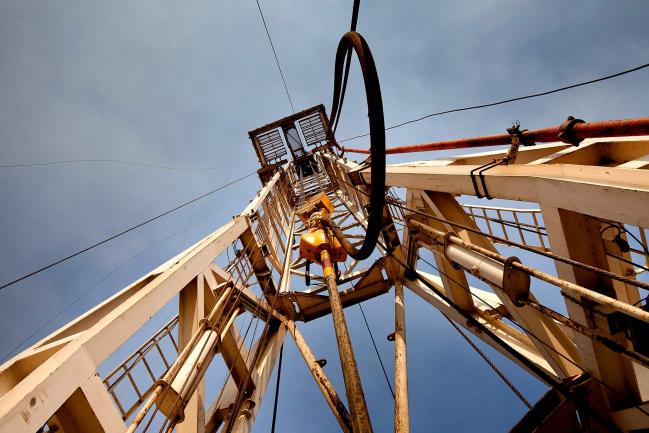(Bloomberg) -- Oil jumped the most since June alongside a rally in broader equities markets, but pared some of those gains after an industry group reported a build in U.S. stockpiles.
Futures in New York surged 3.5% Wednesday, though still fell short of recouping all the losses from the previous session’s settle at a three-month low. Moving in tandem with stronger equities, Brent crude regained its technical footing, sharply rising above the 100-day moving average. The 14-day Relative Strength Index for futures in London and New York was below 30 on Tuesday for the first time since April, signaling the two benchmarks were oversold.
U.S. futures pared some gains after the industry-funded American Petroleum Institute reported domestic crude inventories rose last week, according to people familiar. The build, if confirmed by the U.S. Energy Information Administration’s report on Thursday, will be the first in seven weeks.
Oil recovered from an oversell Tuesday, said Gary Cunningham, director of market research at Tradition Energy. The rebound in equities signals “the economy isn’t in as bad a shape as thought,” he said.
Despite Wednesday’s gains, oil is still on track to decline this week as a faltering demand recovery in parts of the world and the onset of refinery maintenance season weighs on the outlook for consumption already devastated by the pandemic. Meanwhile, in the latest signal of a gloomy outlook for U.S. oil production and weaker demand, Enterprise Products Partners (NYSE:EPD) LP canceled the expansion of its 450,000 barrel a day Midland-to-Echo crude oil pipeline system that connects the Permian Basin with the Gulf Coast.
The picture doesn’t look much better on the refining side. Refinery utilization may stay around 75% of capacity until early 2021, if refineries have to clear the ongoing surplus in oil products inventories, Citigroup Inc (NYSE:C). analysts wrote in a report. That’s as refining margins continue to be dismal, with the crack in the U.S. for combined gasoline and diesel below $10 a barrel at its lowest seasonal level in nearly 10 years.
“This is really a demand concern now, and that’s what’s going to lead into the end of the year” amid uncertainty over a vaccine and a potential return of lockdown restrictions due to the pandemic, said Tariq Zahir, managing member of the global macro program at Tyche Capital Advisors LLC. “Sure, you can inch up a little bit higher here again, but I think the risk is downward.”
Still, the deteriorating outlook for oil has led to declines in U.S. output. EOG Resources Inc (NYSE:EOG)., America’s biggest independent shale oil producer, said U.S. oil will likely suffer years of declines and may never regain the peak achieved earlier this year.
“U.S. oil production is going to be under a lot of pressure for the foreseeable future because a lot of these companies have gone bankrupt, they’ve been under financial duress for a while now,” said Josh Graves, senior market strategist at RJ O’Brien & Associates LLC. “That’s going to take away from the supply side. But is it going to be enough to outweigh the lack of demand? That’s a question that is yet to be answered.”
©2020 Bloomberg L.P.

